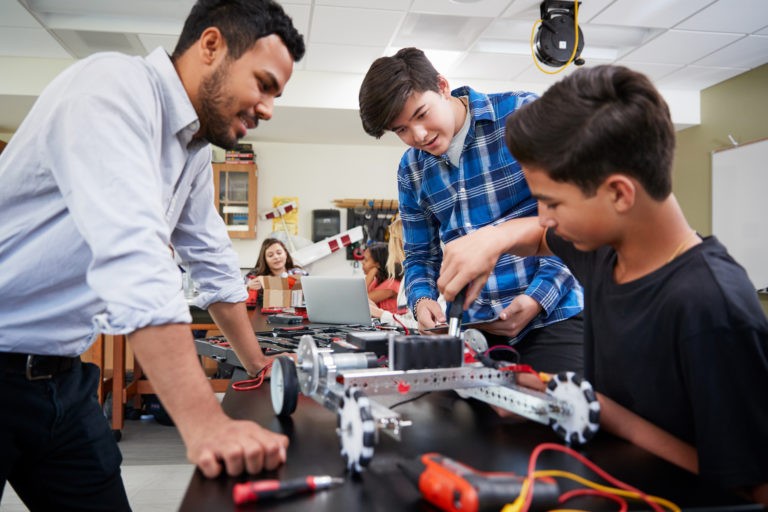New research reveals that American student interest in STEM careers is on the decline. There was a significant drop of 24% of boys wanting a STEM career, down from 36% in 2017, while girls’ interest has remained unchanged year after year. A nationwide survey conducted by the Philadelphia-based Society for Industrial and Applied Mathematics (SIAM) gathered responses from 1100 high school students ages 16-18 years old from across the U.S. on how to increase student interest and understanding in math and STEM subjects. The study found that students recommended using more out-of-the-box teaching strategies to promote STEM interest, such as through classroom competitions, humor, and relatable lessons. Here we’ll take a closer look at the results, as well as give you a few ideas on how you can implement the findings in your classroom.
Increase STEM Interest Via Competitions
According to the survey, one key way to draw more U.S. students to STEM subjects is by increasing participation in fun science projects and classroom competitions. Almost 60% of respondents recommended these ideas would increase their interest. Countless amounts of STEM-related science experiments and competitions are on the internet that can help to increase students’ interest. Here are a few favorites.
There are a number of STEM competitions available for middle school and high school students to demonstrate their skills. The Google Science Fair is an online science and technology competition open to students and teams ages 13-18 years old. In addition to that, the International Science & Engineering Fair is a precollege science competition open to students in grades 9-12 where students compete in regional and national competitions within 22 different subcategories in STEM fields. Meanwhile, the First Tech Challenge is open to students in grades 7-12 where students design, build, program, and operate robots to compete in the challenge.
Science projects were another key way that students suggested would draw their interest into STEM subjects. The STEM Laboratory is a great website to get science experiments and projects ideas for young, elementary school-aged children, while Science Buddies is a great website for science project ideas for middle school students.
Relate Lessons to Real-Life Situations
Making STEM relatable to real life was another idea that 49 percent of respondents in the survey suggested. In order to engage students more deeply, you can structure your STEM lessons to relate to what students already know. Giving students concrete examples, talking about past experiences, bringing up current events, or even inviting in a guest speaker to talk to students are all great ways to relate the real world to your STEM lessons. Going on a field trip and using media as a tool is another creative way to optimize learning and connect students to the real world. Field trips offer students a hands-on way to connect what they are learning to the real world, while media tools like YouTube, newsfeeds, social media, and podcasts can help gain students’ interest by bringing the real world to the classroom.
Using Humor
Adding humor to STEM subjects through videos and projects was another suggestion that would gain student interest, said 32% of students surveyed. While STEM subjects aren’t usually associated with humor, if it will gain student interest in STEM, it’s worth a try.
With the gaining popularity of social media and apps such as Instagram, TikTok, and YouTube, today’s children are drawn to more creative and entertaining ways to capture their attention. These apps allow users to be creative and make videos that use music and other graphics. Educators can use these popular platforms to increase student interest in STEM subjects by allowing their students to video their STEM experiments and projects in a creative and imaginative way that uses humor. These non-traditional, technological ways of sharing information may be just the thing to capture students’ attention when it comes to STEM learning.
Survey Highlights
Students believe that the U.S. government can help boost enthusiasm as well. Twenty-five percent of respondents said the government can be supportive by backing up STEM-related competitions and projects, while 23% suggested they can provide better resources and classroom technology. Twenty-one percent believed the government should support STEM-related awards and scholarships, while 18% suggested more funding and after school math and science clubs.
When it comes to improving a key component of STEM – math – survey results showed that one third of students said that more one-on-one assistance, as well as using real-life examples, were the best ways to do it. Twenty-one percent of students suggested improving math skills through fun games, technology, and interactive multimedia would do the trick.
While STEM interest for students may be on the decline, what we can learn from these survey results is that there is hope in increasing the interest of STEM education and future careers in STEM for our youth. By taking these results and implementing the student suggestions into all STEM lessons, we can effectively gain student interest.




